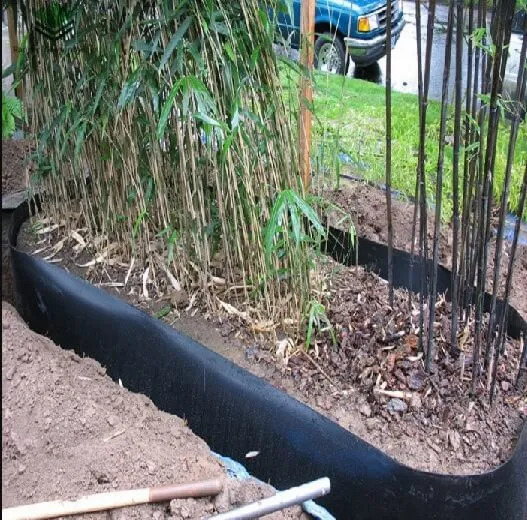A Step-by-Step Guide to Installing HDPE Root Barriers
Introduction:
As urban development expands and landscapes evolve, controlling root growth becomes a critical consideration. Uncontrolled root systems can cause structural damage and pose safety risks. To address these challenges, HDPE (High-Density Polyethylene) root barriers have emerged as an eco-friendly and effective solution. In this step-by-step guide, we will walk you through the process of installing HDPE root barriers to protect your structures and maintain a harmonious landscape. Additionally, we will explore Singhal Industries, a leading HDPE root barrier manufacturer and exporter, known for their top-quality products and commitment to sustainability.
Understanding HDPE Root Barriers:
HDPE root barriers are specialized sheets or panels made from high-density polyethylene, a durable and flexible plastic material. These barriers are designed to control root growth and prevent them from causing damage to buildings, utility lines, and other critical structures. By creating a physical barrier in the soil, HDPE root barriers redirect root growth away from sensitive areas, ensuring the safety and stability of your landscape.
Step 1: Site Analysis and Planning
Before installing HDPE root barriers, conduct a thorough site analysis. Identify the areas where root control is necessary and assess the types of trees and plants in proximity to your structures. This analysis will help you determine the appropriate barrier type and placement.
Step 2: Choose the Right HDPE Root Barrier
Based on your site analysis, select the suitable type of HDPE root barrier. Vertical barriers are ideal for protecting building foundations, while horizontal barriers are suitable for large landscape areas. Membrane barriers work well around pavements and utility lines.
Step 3: Prepare the Site
Clear the area where you plan to install the HDPE root barriers. Remove any existing roots or debris that could hinder the installation process. Level the ground to create a smooth surface for laying the barrier.
Step 4: Unroll and Position the HDPE Root Barrier
Unroll the HDPE root barrier along the designated path, ensuring that it covers the necessary area. For vertical barriers, position the barrier against the side of the structure to be protected. For horizontal barriers, ensure proper coverage of the landscape area.
Step 5: Overlap and Secure the Barrier
To create a continuous and effective barrier, overlap the edges of the HDPE root barrier by at least 6 inches. Secure the barrier in place using anchoring stakes or fasteners, making sure it remains taut and flat against the ground.
Step 6: Test and Adjust
After securing the HDPE root barrier, perform a thorough inspection to check for any gaps or loose sections. Test its effectiveness by observing the root growth pattern around the barrier. Make any necessary adjustments to ensure optimal protection.
Step 7: Backfill and Restore the Site
Once the HDPE root barrier is successfully installed and tested, backfill the area with soil, carefully packing it around the barrier. Restore the landscape to its original condition, and consider planting new trees and plants away from sensitive structures.
Singhal Industries - A Trusted HDPE Root Barrier Manufacturer and Exporter:
Singhal Industries Private Limited is a prominent name in the industry, known for manufacturing high-quality HDPE root barriers. Their products are designed to provide effective root control while promoting sustainable landscaping practices. With years of experience and a commitment to excellence, Singhal Industries continues to be a preferred choice for customers seeking reliable and eco-friendly solutions.
Conclusion:
Installing HDPE root barriers is a crucial step in protecting your landscape and structures from potential root damage. By following this step-by-step guide, you can effectively control root growth and ensure the longevity of your landscape. Singhal Industries' dedication to producing top-notch HDPE root barriers further enhances the credibility and reliability of this eco-friendly solution. Embrace the benefits of HDPE root barriers and safeguard your environment today.
FAQs:
Are HDPE root barriers eco-friendly?
Yes, HDPE root barriers are made from high-density polyethylene, a recyclable and eco-friendly material.
Can HDPE root barriers be used for commercial projects?
Absolutely, HDPE root barriers are suitable for both residential and commercial applications, offering reliable root control in various settings.
Do HDPE root barriers require maintenance?
HDPE root barriers require minimal maintenance. Periodic inspections can ensure their effectiveness and longevity.
Can Singhal Industries provide customized root barrier solutions?
Yes, Singhal Industries can tailor HDPE root barriers to meet specific project requirements.
Is HDPE root barrier installation a DIY project?
While some homeowners may choose to install HDPE root barriers themselves, it is advisable to hire a professional for larger or complex projects to ensure proper installation and effectiveness.




.png)


ReplyDeleteHii
The blog was absolutely fantastic! Thank you for sharing this.It is worth reading for everyone. Very informative article. Keep it up.
QuickBooks support phone number
QuickBooks Online support
Quickbooks enterprise support
QuickBooks Tool Hub
QuickBook support by certified expert